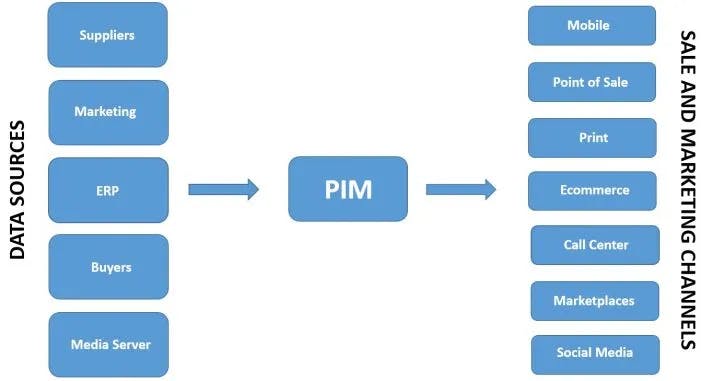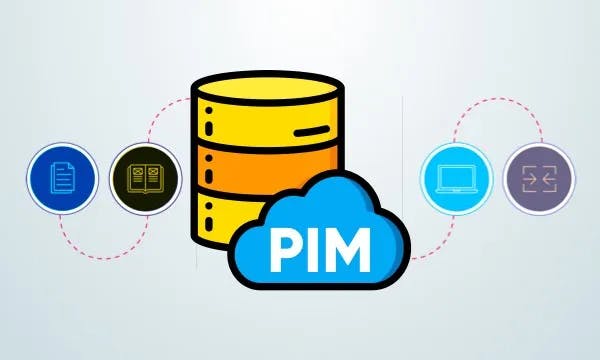Introduction
Recent technological developments have made it easier to keep up with product information management. This involves tracking the latest technologies, methods, and approaches to grow a brand. Therefore, one of the major areas that companies need to stay up to date with is their Product Information Management (PIM) System. As companies move towards new digital-focused business models, they are replacing their legacy PIM systems, which will positively impact their businesses.

Why Is It Necessary To Change An Outdated PIM System?
The legacy PIM system organizes the information of specific products. It was developed and designed for supporting workflows. However, with the progression of technology, these systems are now outdated and inefficient. When new products are launched, they require more time, workforce, and money. With your old PIM systems, you cannot determine exactly which information should be on a channel. For this reason, you need to replace these legacy systems.
Replacing these systems will not only save you money but will also improve the customer experience. When integrated with other systems such as the Enterprise Resource Planning (ERP) system, and Order Management System (OMS), a PIM system controls and manages commerce engines. It also displays products in an orderly manner.
A smart PIM system has SEO that ensures more traffic. It can also stimulate cross-sell and upselling. On the other hand, you might face difficult management-related situations with a legacy PIM system. The continued evolution of PIM systems allows your company to explore new growth opportunities.
Issues With Fixing A Legacy PIM System
An efficient PIM system plays an integral role in the success of an e-commerce website. According to Occams Research, this system can manage product information depending on the data provided. The system helps you manage your products and makes it easier for companies to track changes and provide complete information to customers. However, these outdated systems have issues. If you are thinking of fixing and not replacing it, you might face some troubles.
Putting different functionalities together to form a PIM system may not be very scalable. Some examples of these are given below. Note the problems companies will face after adopting manual fixing, all-inclusive fixing, etc.
- Managing worksheets, scripting SQL, and pivot tables can be hectic. The workflow becomes risky when you use multiple tools to control your data. Apart from this, it takes time and costs money. Therefore, don’t think of risking your pool of data with worksheets and SQL.
- The all-inclusive platform fixing is not a solution to centralizing data. You will require a specialized system to receive data from different sources like print catalogs, websites, and reports. However, this fixing method won’t be able to give you such functions and features. Scalability will also be an issue. It will create hurdles when you want to integrate the PIM systems with other third-party applications.
- Restructuring PIM systems according to business needs is quite tricky. You need to stop your essential operations and create a customized PIM, which won’t reduce your problems. Instead, the end product you’ve built with customized PIM fixing can still be inefficient and may lack flexibility.
Benefits of Replacing a Legacy PIM System

A legacy PIM system is well-known for its inefficiency and lack of flexibility. However, with the introduction of new PIM systems, it is possible to deal with massive data. The benefits of replacing a legacy PIM system are:
1. Provides A Broader Product Range
A PIM system creates room for more products. Despite this, you get high data accuracy and quality. Correct formats and automated updates enable you to bring new products to the market smoothly.
So, you can sell more products when the data is complete. Customers will have a broader range from which they can select according to their requirements. You can offer them products via drop-shipment.
2. Simplify Your Work Process
PIM systems remove unnecessary work-related tasks from businesses. It will allow individuals to get a particular task for improving the company’s efficiency. As a result, it minimizes the risks and gives precise data. It’s a lot easier for managers who handle urgent workflows. The system can save time when managers work on profitable tasks.
PIM systems can be used to design and operate the work process from a single platform. Advanced workflow engines can notify you when a new product is needed.
3. Improves Consumer Experience
The PIM system provides detailed information to the customers. They can get new products in no time because of this system. The best part about PIM is that it allows customers to view the stocks of a particular company.
Additionally, the system reduces the probability of product returns. As a result, you will have excellent services for your consumers. As a result, the PIM system pushes customers to buy your products.
4. Saves Cost To Maximize Revenue
When business models work on a powerful interface, their Return on Investment (ROI) automatically improves. If you are a retailer who wants to maximize revenue, an enterprise-ready PIM system is what you need. A smart PIM system reduces supply chain costs. So, the productivity of your company will increase.
It provides you with specific ways that can ensure better functionalities. A smart PIM system has a unique architecture that allows suppliers to stand out from the competition. With automation and workflows, you don’t need a lot of manpower to handle the product data flow. It lowers the cost and increases your revenue by reducing management risks. Additionally, PIM prevents the costs of bad product data.
Closing Thoughts
A legacy PIM system has been in use for a long time. However, fixing a legacy PIM system may result in a bigger issue. It does not provide the same quality information as a new PIM system. Instead, it is costly to maintain and may not be compatible with the marketplace and channel requirements and the current needs of your brand.
This is the main reason why companies should replace their legacy PIM systems. Moving to a new PIM system will help you reduce costs, keep up with the current market trends, increase sales, and earn higher profits in the long run.
Unbxd PIM empowers your digital shelf with the easy import of product information, manage, optimize and enrich product content at scale. Reach out to us for a free demo!






